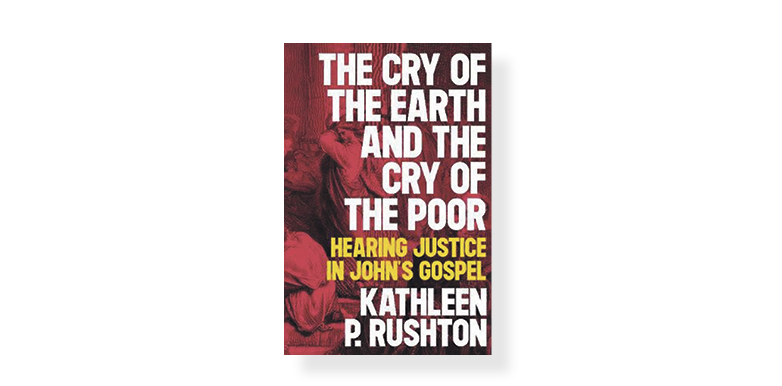WelCom October 2021
Author: Kathleen P Rushton
Publisher: SCM Press London, 2020
Paperback: 256 pages
Reviewed by: James B Lyons
The Gospel of John has never been my go-to book regarding social justice. But it takes on new meaning as Kathleen Rushton exposes it in the light of present-day degradation of the earth and human poverty.
Using the Lectio Divina form of reading/meditation/prayer/action, with a gentle but determined and knowledgeable stance, she invites the reader on a journey of discovery through this unique Gospel.
It works for me.
Throughout the text, the title word ‘poor’ is replaced by ‘marginalised’ which the author sees is a better fit for the story of Jesus as told in John.
We find a very radical Jesus focussed on a ‘barrier-breaking ministry’. He moves through cultural, social and religious barriers to reach marginalised people such as Nathaniel, Nicodemus, the Samaritan woman and the man born blind. The reader is challenged to understand poverty in relation to illness, affliction, loneliness and approaching death.
The opening words of the Prologue to the gospel, In the beginning, link the reader to the creation account in Genesis, to the garden which is the work of God entrusted to our care, to the symbols of darkness and light and to the mystery and intimacy of the mission given to Jesus, the Word made flesh, to do the works of God.
For Rushton, the Prologue is a summary of the gospel, its themes unfolding and deepening across the gospel’s 21 chapters. It is apparent that ‘the world’ is inclusive of all creation and continues to evolve as God keeps working through us. This focus gives the whole Gospel a context in which justice and completing the works of God become paramount.
Creation and re-creation are constants in the mind of Jesus, his teaching drawing greater awareness to the gift of earth. He uses images from agriculture, viticulture and from the gifts of nature, such as water and wind. And gardens feature again in the death-resurrection account.
The linking of death with resurrection is an important factor in understanding the thrust of this book. It puts a clear obligation on the followers of Jesus to continue the works of God empowered by the Spirit which enables the presence of Jesus in his absence.
An over-emphasis on the death of Jesus can lessen the significance of the empty tomb and lead to an incomplete appreciation of what it means to be Christian – to remain (abide) in Jesus to continue the works of God.
Written with attention to the cultural and social environment in which Jesus lived, the situation of slaves, the domination of wealth, the value and necessity of working together become more graphic with implications for 21st century issues. The Lectio Divina technique is shown as an excellent way to identify both concerns and practical action.
The place of women in the early Church is questioned – as it is today – by noting the disappearance of women from the final chapter, despite their vital presence elsewhere.
John’s Gospel, likely written at Ephesus, addresses people living near the end of the first century. The injustices of the time echo in our own time, making this re-telling of the story of Jesus ‘in new and often unique ways’ (p.164) very relevant for us. Rushton’s approach is innovative, faithful and practical. She speaks justice with a voice that everyone can hear.
With eight pages of bibliography and 334 footnotes providing evidence of thorough and careful research, Kathleen Rushton’s writing offers a contribution to Catholic social teaching and reflection that will endure.
The Cry of the Earth and the Cry of the Poor is not a book to be read at one sitting. It’s a good read but not an easy one. It will get you thinking and it will challenge. But you will also be wonderfully surprised by the insights of the author and how her scripture scholarship has enabled her to interpret the gospel writer, understanding his subtlety in the placement of symbols and his purpose in writing.
It will not be enough to read this book. The Cry of the Earth and the Cry of the Poor must also be prayed. It holds all that is needed for a wonderful, personal and uplifting retreat.
The Cry of the Earth and the Cry of the Poor is priced around $50 and can be purchased online at: www.fishpond.co.nz/Books
Sr Kathleen is a Mercy Sister, resident in Christchurch and, among other commitments, is a scholar and a lecturer, and a member of the New Zealand Catholic/Lutheran Commission.
